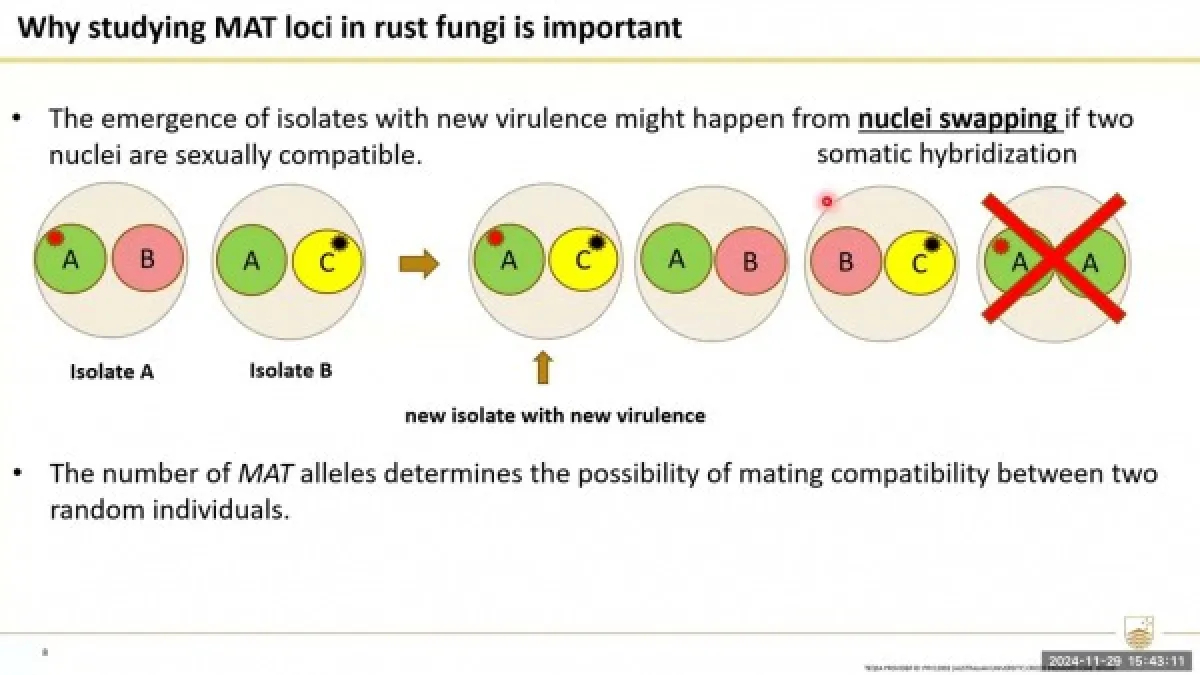PS PhD Exit Seminar: Genome biology of rust fungi
The rust fungi (Pucciniales) comprise the largest order of plant pathogenic fungi and are among the most serious threats to both agricultural crops and natural ecosystems.
Speakers
Event series
Content navigation
Description
Abstract: The rust fungi (Pucciniales) comprise the largest order of plant pathogenic fungi and are among the most serious threats to both agricultural crops and natural ecosystems. For example, the myrtle rust pathogen (Austropuccinia psidii), is threat to more than 480 host species belonging to the Myrtaceae family in Australia, including the Eucalyptus genus, which includes Koala food trees.
Here I will present my progress in understanding the genome biology of rust fungi better.
First, I will discuss my work on mating type gene analysis is rust fungi. This is important because a better understanding can help predict possible combinations of nuclear pairs generated by sexual reproduction or somatic recombination, and the potential evolution of new virulent isolates of these important plant pathogens.
I will then move on to discuss the application of mating type genes in the applied diagnostic of novel incursions of the exotic myrtle rust strains. Exotic myrtle rust strains the #11 top plant priority pest species of DAFF. Hence developing tools that allow for the detection of novel incursion is key to Australia’s environmental biosecurity.
Lastly, I will provide an update on the genome organisation and unique genomic features of A. psidii using fully phase reference genomes of four different isolates.
Biography: Yan completed her undergraduate study in Biotechnology from 2014-2018. She then moved to Canberra in 2019-2020 for master's studies and joined the Schwessinger lab in the mid-2019. Her master's project investigated the Austropuccinia psidii genome and conducted comparative genomic analysis within Basidiomycetes. She continued her doctoral research in the Schwessinger lab from 2021, starting with investigating the MAT loci of rust fungi, then moving on to generating and investigating the Austropuccinia psidii chromosome-scale phased genome.
Location
Passcode: 110177





